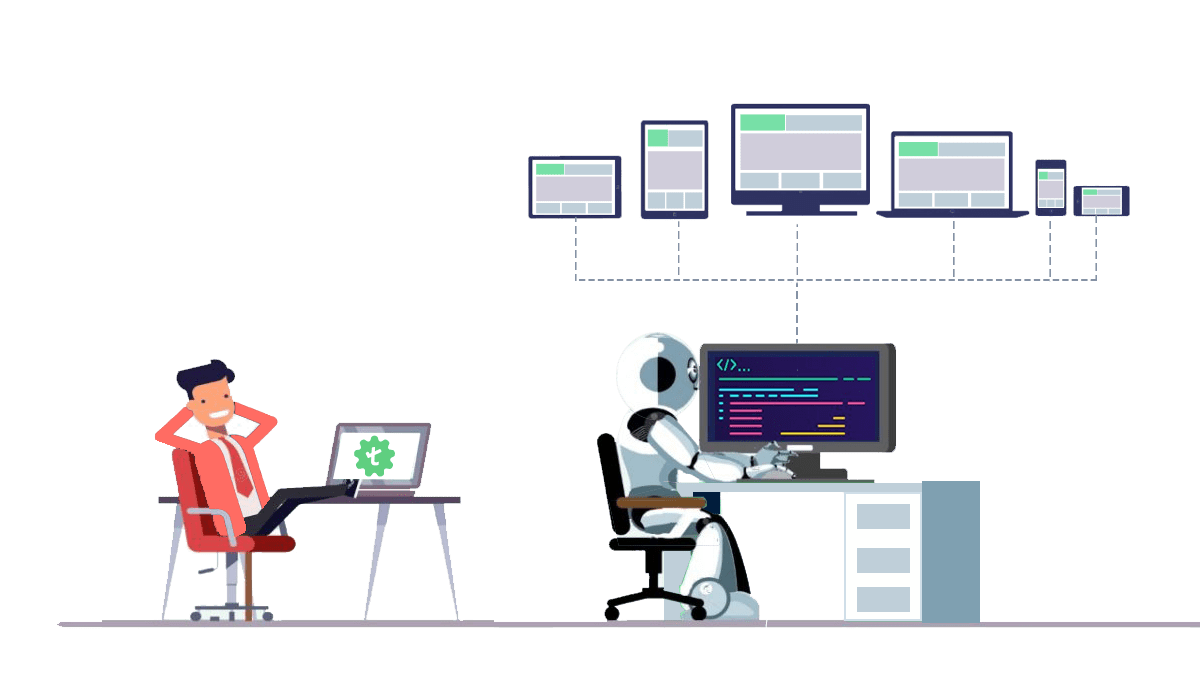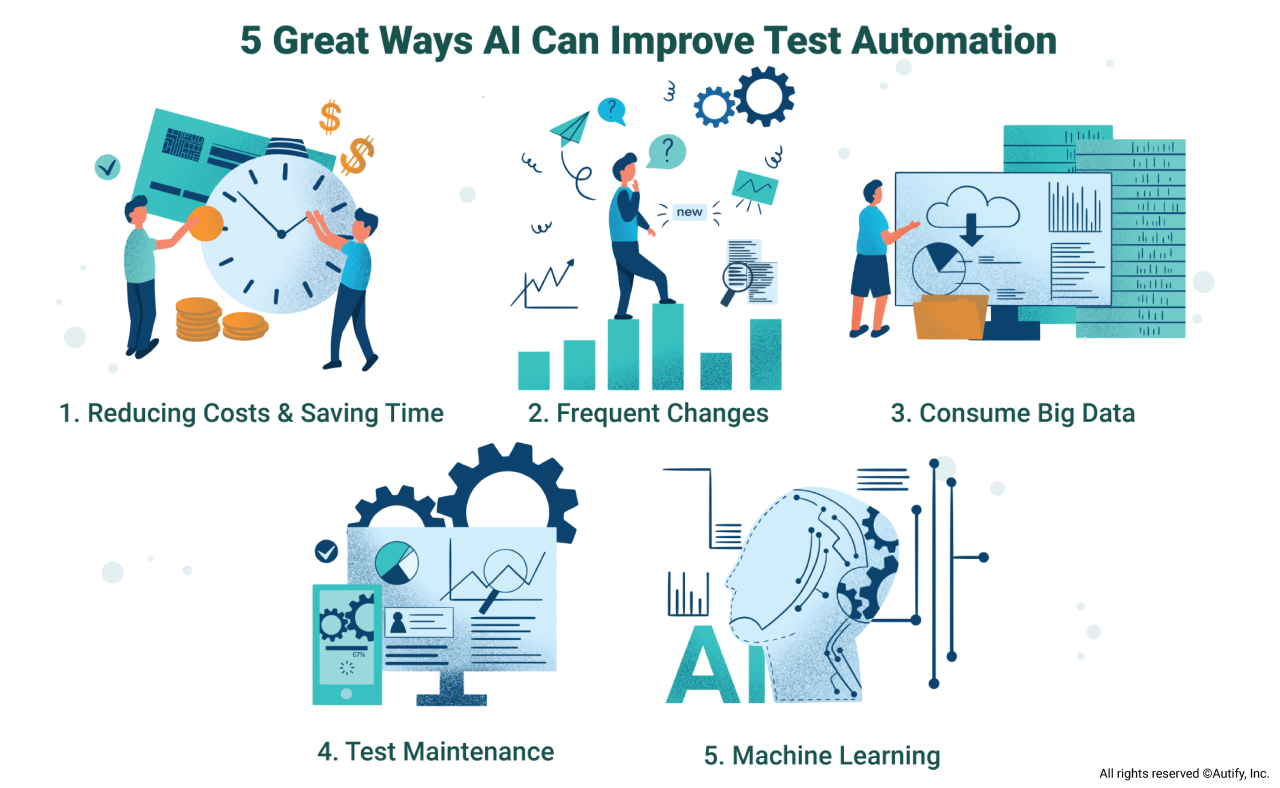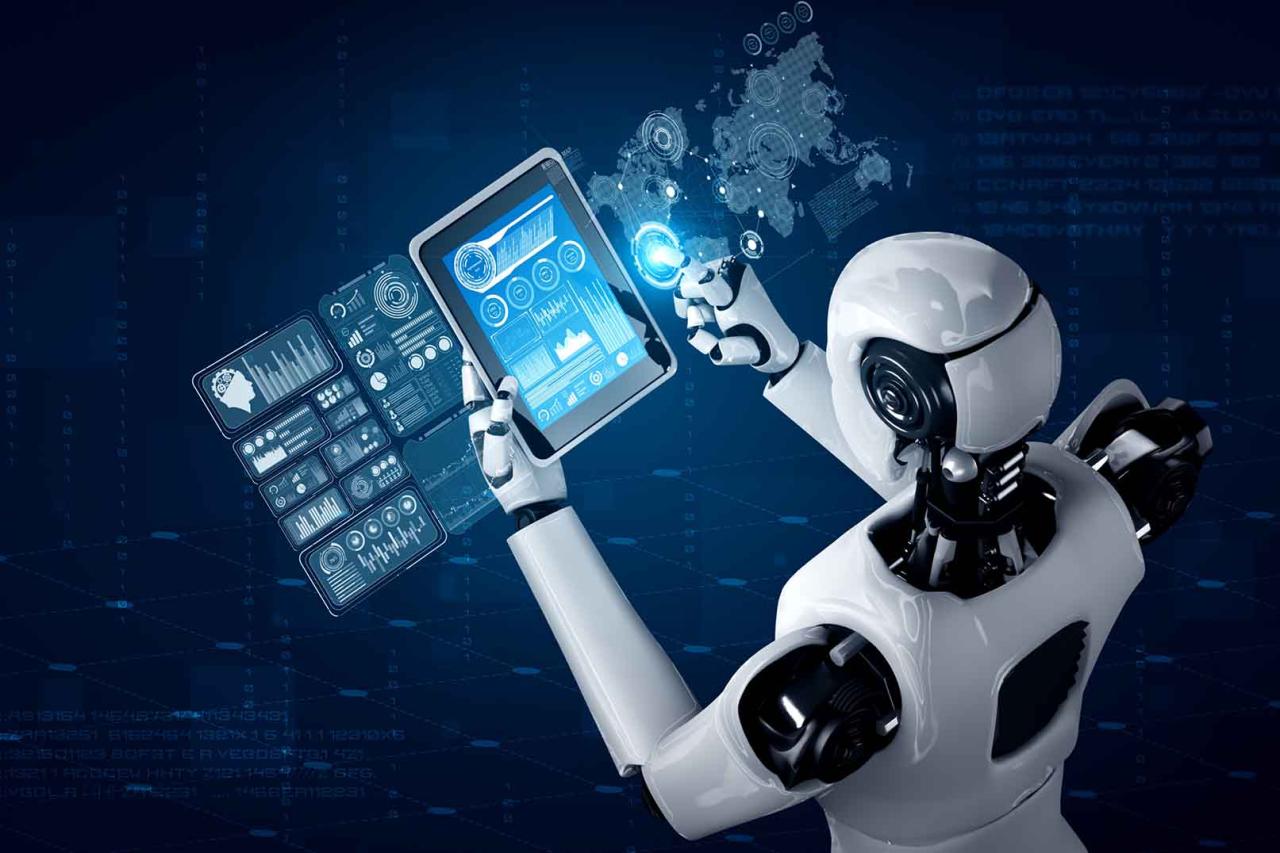Automated testing with AI is rapidly transforming the software development landscape. No longer a futuristic concept, AI-powered testing offers significant advantages over traditional methods, improving efficiency, accuracy, and ultimately, the quality of software applications. This exploration delves into the core principles, techniques, and future trends of this exciting field, examining both its potential and its limitations.
This discussion will cover the various AI algorithms employed in test automation, from machine learning for intelligent test case generation to deep learning for sophisticated analysis of test results. We will also explore how AI facilitates test execution, reporting, and maintenance, reducing manual effort and enhancing overall productivity. The integration of AI into automated testing is not without its challenges, however, and we will address potential obstacles and strategies for mitigation.
AI Techniques in Automated Testing

Artificial intelligence (AI) is rapidly transforming the field of software testing, offering significant improvements in efficiency, accuracy, and coverage. By leveraging various AI algorithms, automated testing processes can be significantly enhanced, leading to higher quality software releases and reduced development costs. This section will explore the key AI techniques driving this transformation.
AI algorithms are revolutionizing various stages of the automated testing lifecycle. Machine learning (ML), deep learning (DL), and natural language processing (NLP) are particularly impactful, each contributing unique capabilities to test case generation, execution, and analysis.
AI Algorithms in Automated Test Automation
Several AI algorithms contribute significantly to the advancement of automated testing. Machine learning algorithms, particularly supervised learning techniques like regression and classification, can be trained on historical test data to predict potential failures and prioritize critical test cases. Deep learning, a subset of machine learning, excels at identifying complex patterns in large datasets, enabling the detection of subtle bugs that might be missed by traditional methods. Natural language processing (NLP) allows for the automated generation of test cases from user stories and requirements documents, reducing manual effort and improving test coverage.
Improved Test Case Generation with AI
AI significantly enhances test case generation by automating the process and improving its efficiency. Instead of relying solely on manual creation, AI algorithms can analyze requirements documents and generate test cases automatically. For instance, NLP techniques can parse user stories and identify key functionalities, constraints, and potential failure points. This information is then used to generate a comprehensive set of test cases, covering various scenarios and edge cases. This automated generation reduces the time and effort required for test case creation, allowing testers to focus on more complex aspects of testing. Furthermore, AI can analyze existing test suites and identify gaps in coverage, suggesting additional test cases to ensure thorough testing.
Improved Test Execution and Analysis with AI
AI improves test execution and analysis through intelligent test case prioritization, automated defect detection, and insightful reporting. Machine learning models can predict the likelihood of test case failures based on historical data, allowing for the prioritization of critical test cases. This optimized execution saves time and resources by focusing on the most important tests first. Deep learning models can analyze test execution logs and identify subtle patterns indicative of defects, which might be missed by human testers. AI-powered reporting tools provide comprehensive insights into test results, highlighting areas of concern and suggesting improvements to the testing process. These improvements contribute to a faster and more efficient testing process, resulting in higher quality software.
Hypothetical Scenario: AI-Powered Test Case Generation for a Web Application
Imagine a web application with a complex user authentication system. Using NLP, the system can process user stories such as “As a registered user, I want to be able to log in securely using my username and password” and “As an administrator, I want to be able to reset a user’s password.” The NLP engine extracts key elements like user roles, actions (login, password reset), and expected outcomes (successful login, password reset confirmation). This information is then used to automatically generate a comprehensive set of test cases covering various scenarios, including successful logins, failed login attempts (incorrect credentials, locked accounts), password reset workflows, and security vulnerabilities. These generated test cases are then executed automatically, and AI-powered analysis identifies potential defects and generates detailed reports. This approach dramatically reduces the time and effort needed to test the authentication system while ensuring high test coverage and early detection of bugs.
Test Execution and Reporting with AI

AI is revolutionizing automated testing by significantly enhancing test execution efficiency and providing insightful reporting capabilities. This allows for faster feedback cycles and more effective bug detection and resolution, ultimately leading to higher-quality software. The integration of AI optimizes resource utilization and provides deeper analysis of test results than traditional methods.
AI’s role in optimizing test execution primarily focuses on intelligent resource allocation and parallelization. This leads to substantial time savings and increased throughput in the testing process.
AI-Driven Test Execution Optimization
AI algorithms can dynamically adjust resource allocation based on test complexity and available resources. For example, a system might prioritize executing critical tests on faster machines while assigning less critical tests to less powerful hardware. This intelligent resource management maximizes throughput without compromising test coverage. Furthermore, AI can intelligently parallelize test execution across multiple machines or virtual environments, drastically reducing overall test runtime. Consider a scenario where 1000 tests would normally take 10 hours to run sequentially; with AI-driven parallelization across 10 machines, this could be reduced to just 1 hour. The efficiency gains are substantial.
AI-Powered Test Result Analysis and Reporting
AI significantly enhances the analysis of test results, moving beyond simple pass/fail indicators. Machine learning models can analyze large datasets of test logs, identifying patterns and correlations that would be impossible for a human to detect manually. This leads to more comprehensive and actionable reports. For instance, an AI system could identify that failures consistently occur under specific network conditions or with a particular type of user input, providing developers with invaluable clues to pinpoint the root cause. The reports generated can include visualizations such as heatmaps highlighting areas of frequent failure, or timelines illustrating the progression of errors over time.
AI in Identifying Patterns and Root Causes of Test Failures, Automated testing with AI
AI’s ability to identify patterns in test failures is a game-changer for debugging. By analyzing historical test data, AI can identify recurring failure patterns, even if they are subtle or complex. This goes beyond simple correlation; AI can potentially predict future failures based on identified patterns. For example, if a specific code module consistently fails under high-load conditions, the AI system can flag this as a potential risk area and even suggest potential root causes, such as memory leaks or race conditions. This proactive identification allows developers to address potential issues before they escalate into larger problems. This predictive capability helps teams prioritize bug fixes and proactively address potential vulnerabilities.
Future Trends in AI-Powered Test Automation: Automated Testing With AI

The field of automated testing is undergoing a rapid transformation driven by advancements in artificial intelligence. AI is no longer a futuristic concept; it’s actively reshaping how we approach software quality assurance, offering unprecedented efficiency and accuracy. We’re moving beyond simple script-based automation towards intelligent systems capable of learning, adapting, and even predicting software failures.
AI’s influence on automated testing is set to become even more profound in the coming years, with several key trends shaping the future of the industry. These trends are not isolated developments but rather interconnected advancements that collectively promise a more efficient, robust, and intelligent testing process.
AI-Driven Test Case Generation
The manual creation of test cases is time-consuming and prone to human error. AI algorithms are increasingly capable of automatically generating test cases based on requirements specifications, code analysis, and even user behavior data. This automated generation reduces the time and effort required for test case creation, allowing testers to focus on more complex aspects of testing. For example, AI can analyze a software’s API documentation to generate comprehensive test cases that cover various input scenarios and edge cases, ensuring a broader and more effective test coverage. This leads to earlier detection of defects and improved software quality.
Self-Healing Test Automation
Traditional automated tests often break when the application under test undergoes minor changes. This requires significant manual intervention to fix the broken tests, hindering the efficiency of the testing process. AI-powered self-healing capabilities can automatically identify and adapt to these changes, reducing the maintenance overhead associated with automated tests. For instance, an AI-powered framework might detect a change in the UI element’s ID and automatically update the test script to reflect the change, preventing test failures due to such minor modifications. This ensures the continuous execution of tests, providing consistent feedback throughout the development lifecycle.
Visual AI for UI Testing
Visual testing is becoming increasingly important as applications become more complex and visually rich. Traditional UI testing methods often struggle to identify subtle visual discrepancies. AI-powered visual testing leverages computer vision techniques to compare screenshots or video recordings of the application, accurately detecting even minor visual differences that might indicate bugs. This approach enhances the effectiveness of UI testing by automatically identifying visual inconsistencies that would otherwise be missed by human testers. For example, a pixel-by-pixel comparison of two screenshots could highlight a minor color change or layout issue that is imperceptible to the naked eye.
Intelligent Test Oracles
Determining the expected outcome of a test case is a crucial but often challenging aspect of test automation. Traditional test oracles rely on pre-defined expected results, which can be difficult to maintain and update. AI-powered intelligent oracles can learn the expected behavior of the application through machine learning and predict the outcome of test cases without explicit expected results. This reduces the effort required to define and maintain test oracles, enabling more efficient and flexible testing processes. For example, an intelligent oracle could learn the expected behavior of a recommendation engine by analyzing its past performance and predict the correctness of new recommendations without needing explicit rules for each scenario.
Predictive Test Analytics
AI can analyze historical test data to predict potential issues and prioritize testing efforts. By identifying patterns and correlations in past failures, AI can help testers focus on areas of the application that are more likely to contain defects. This allows for a more efficient allocation of testing resources, reducing the overall time and cost of testing. For instance, AI can analyze past test results and identify modules with a high defect density, allowing testers to concentrate their efforts on those areas and improve the effectiveness of testing. This proactive approach minimizes the risk of releasing software with critical bugs.
Tools and Technologies for AI-Powered Automated Testing
The integration of Artificial Intelligence (AI) into automated testing is rapidly transforming the software development landscape. A wide array of tools and technologies are now available to leverage AI’s capabilities for improved test design, execution, and analysis. This section explores some of the most prominent options, categorized for clarity.
Categorization of AI-Powered Automated Testing Tools
The tools and technologies used for AI-powered automated testing can be broadly categorized based on their primary function. This includes tools focused on test generation, test execution optimization, and intelligent test analysis. Some tools might even span multiple categories.
| Tool Name | Key Features | Programming Language Support |
|---|---|---|
| Testim.io | AI-powered test creation and maintenance; self-healing tests; visual test authoring; cross-browser compatibility; integration with CI/CD pipelines. Testim.io uses machine learning to identify UI elements and create robust tests that are less prone to breakage from minor UI changes. This significantly reduces maintenance overhead. | JavaScript |
| Mabl | Low-code/no-code test automation; AI-driven test maintenance; visual test creation; integrated reporting and analytics; supports various browsers and devices. Mabl simplifies test creation for non-programmers through its visual interface while still leveraging AI for robust test execution and maintenance. Its built-in reporting features provide valuable insights into test results. | No explicit programming language required (low-code/no-code) |
| Functionize | AI-powered test automation platform; self-healing tests; natural language processing (NLP) for test creation; advanced analytics and reporting; integrates with various CI/CD tools. Functionize utilizes NLP to allow users to create tests using natural language descriptions, making it accessible to a wider range of users. Its self-healing capabilities minimize the impact of UI changes on test stability. | JavaScript (for advanced customizations) |
Detailed Examination of Three Prominent Tools
The table above provides a concise overview. Let’s delve deeper into the functionalities of three prominent tools: Testim.io, Mabl, and Functionize. These tools represent different approaches to AI-powered test automation, catering to various needs and skill levels.
The integration of artificial intelligence into automated testing represents a paradigm shift in software quality assurance. While challenges remain, the benefits – increased efficiency, improved accuracy, and reduced testing time – are undeniable. As AI technologies continue to evolve, we can anticipate even more sophisticated and effective testing methodologies, leading to higher-quality software and a more streamlined development process. The future of software testing is undeniably intelligent, and this exploration provides a foundation for understanding its transformative potential.
Automated testing with AI is revolutionizing software quality assurance, significantly improving efficiency and accuracy. This is particularly relevant in sectors dealing with sensitive data, such as healthcare, where rigorous testing is paramount. The increasing reliance on cloud-based systems, as highlighted in this article on Cloud computing in healthcare , necessitates robust automated testing to ensure data security and application reliability.
Consequently, the integration of AI in automated testing for healthcare applications is becoming increasingly crucial.
Automated testing with AI is revolutionizing software development, offering increased efficiency and accuracy. The scalability of these AI-powered tests often benefits from flexible cloud infrastructure, and this is where adopting a Pay-as-you-go cloud pricing model becomes advantageous. This allows businesses to scale their testing resources up or down as needed, optimizing costs while maintaining the rigorous standards demanded by AI-driven automation.
